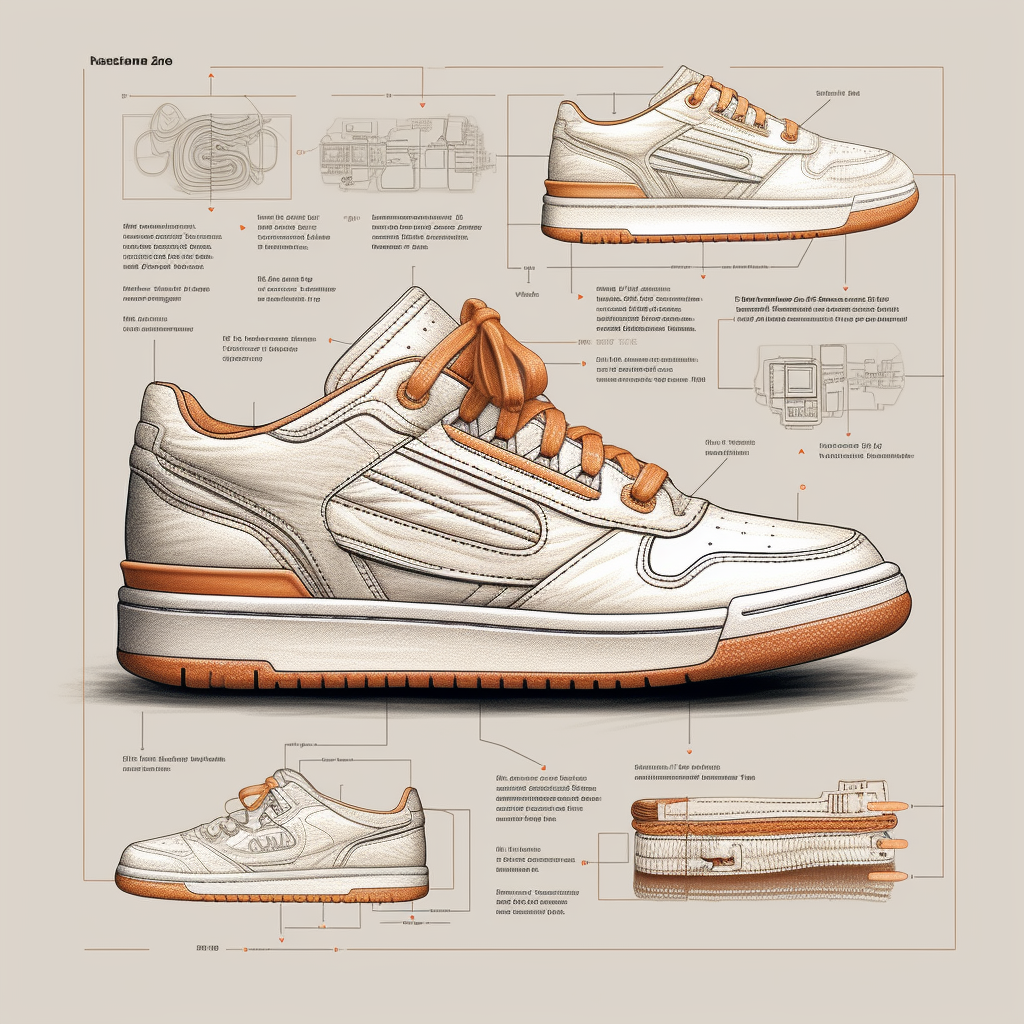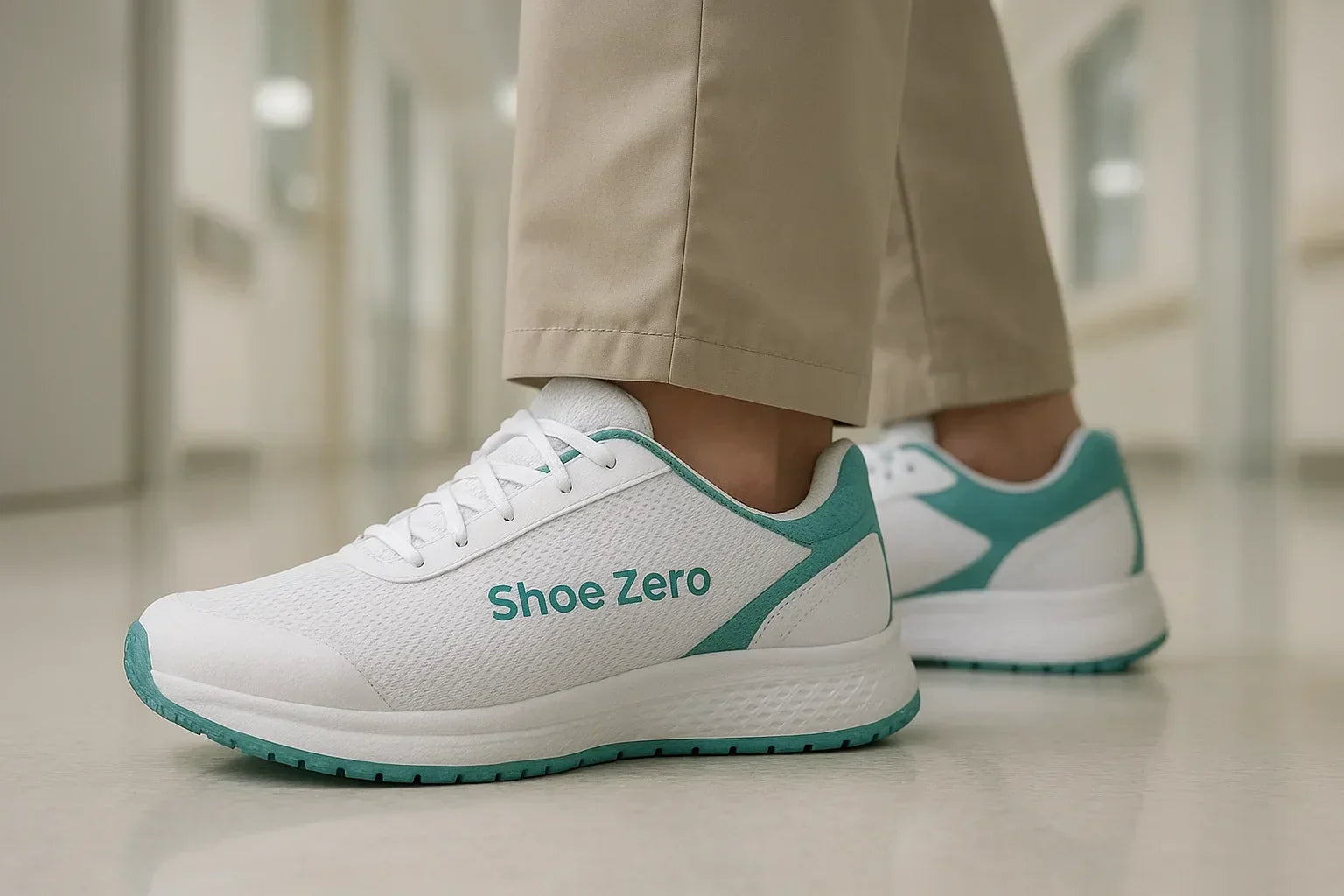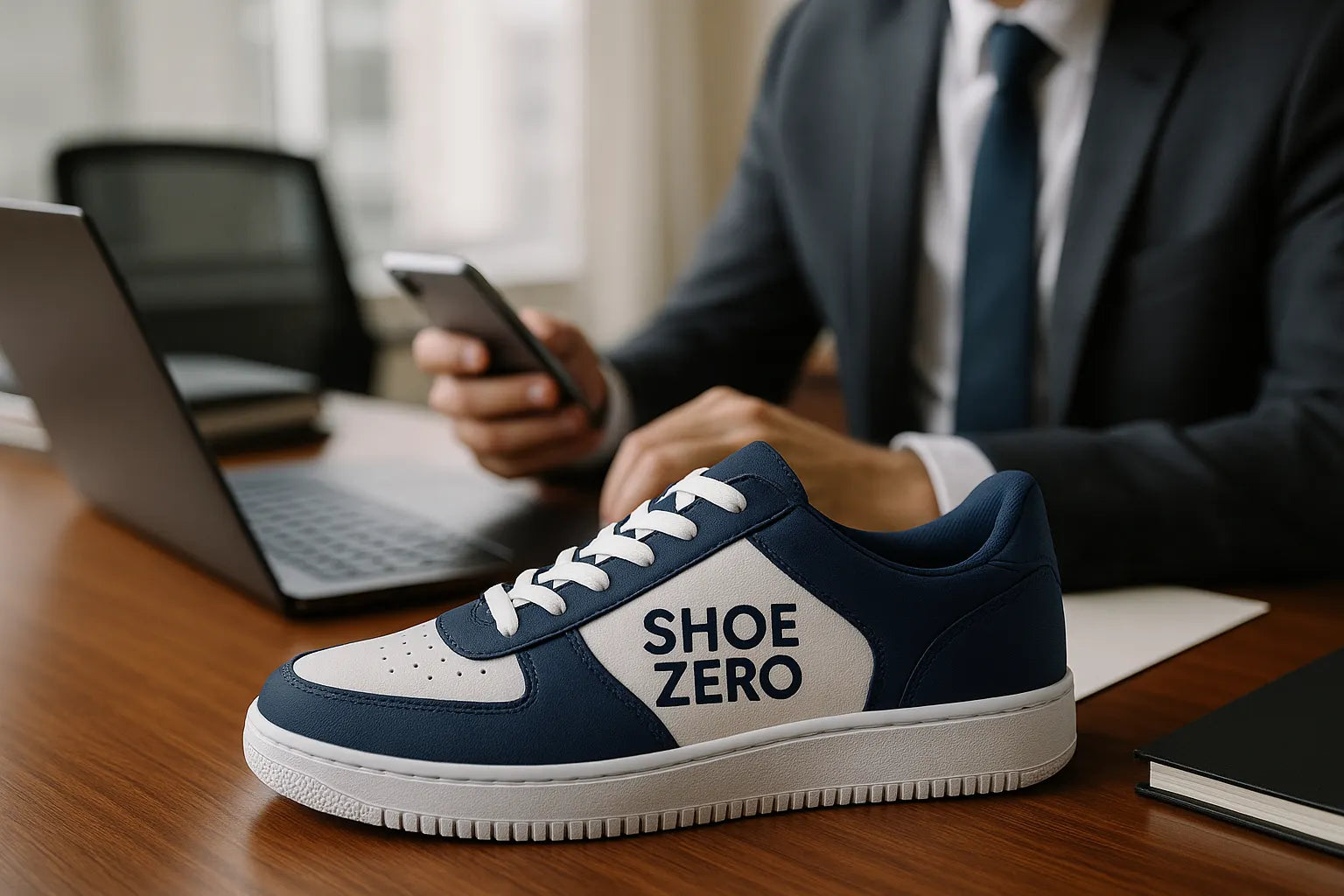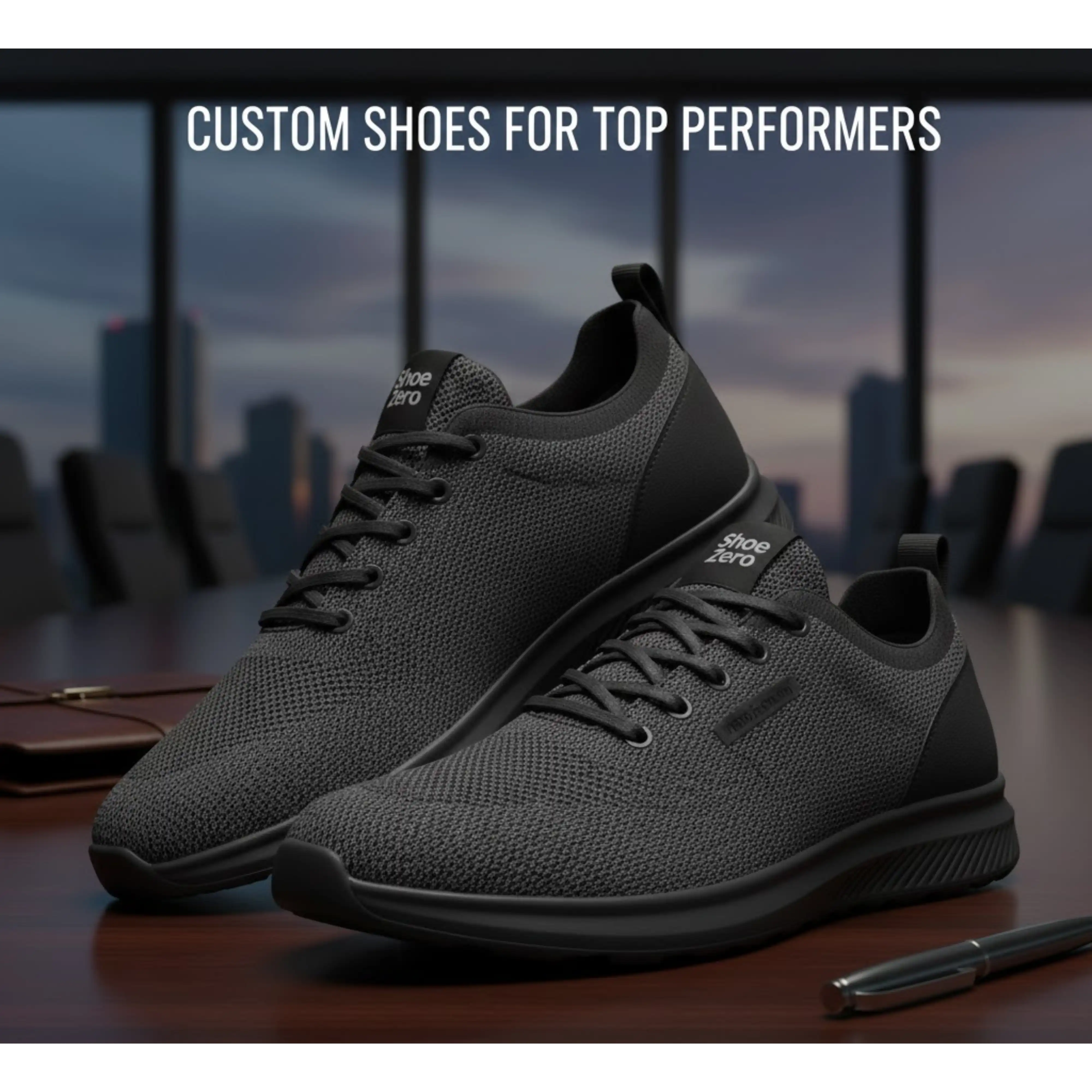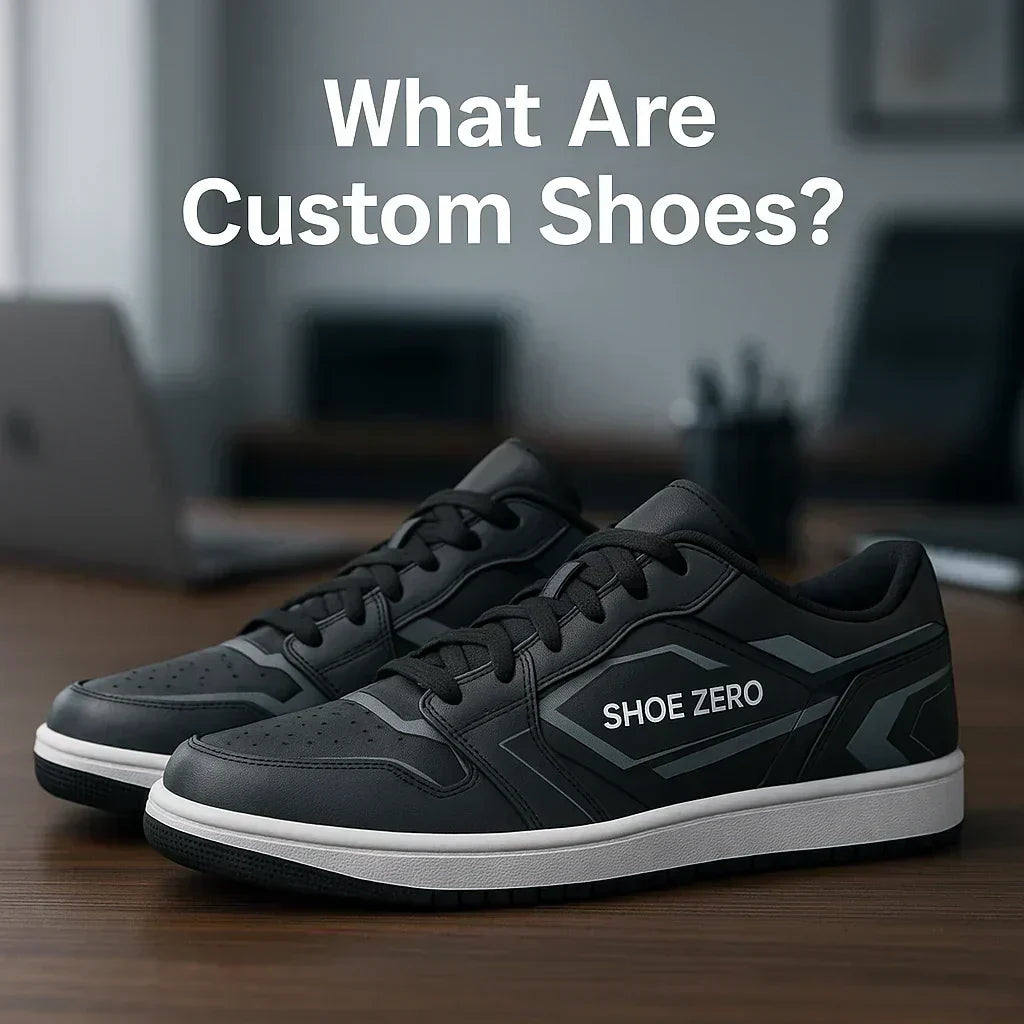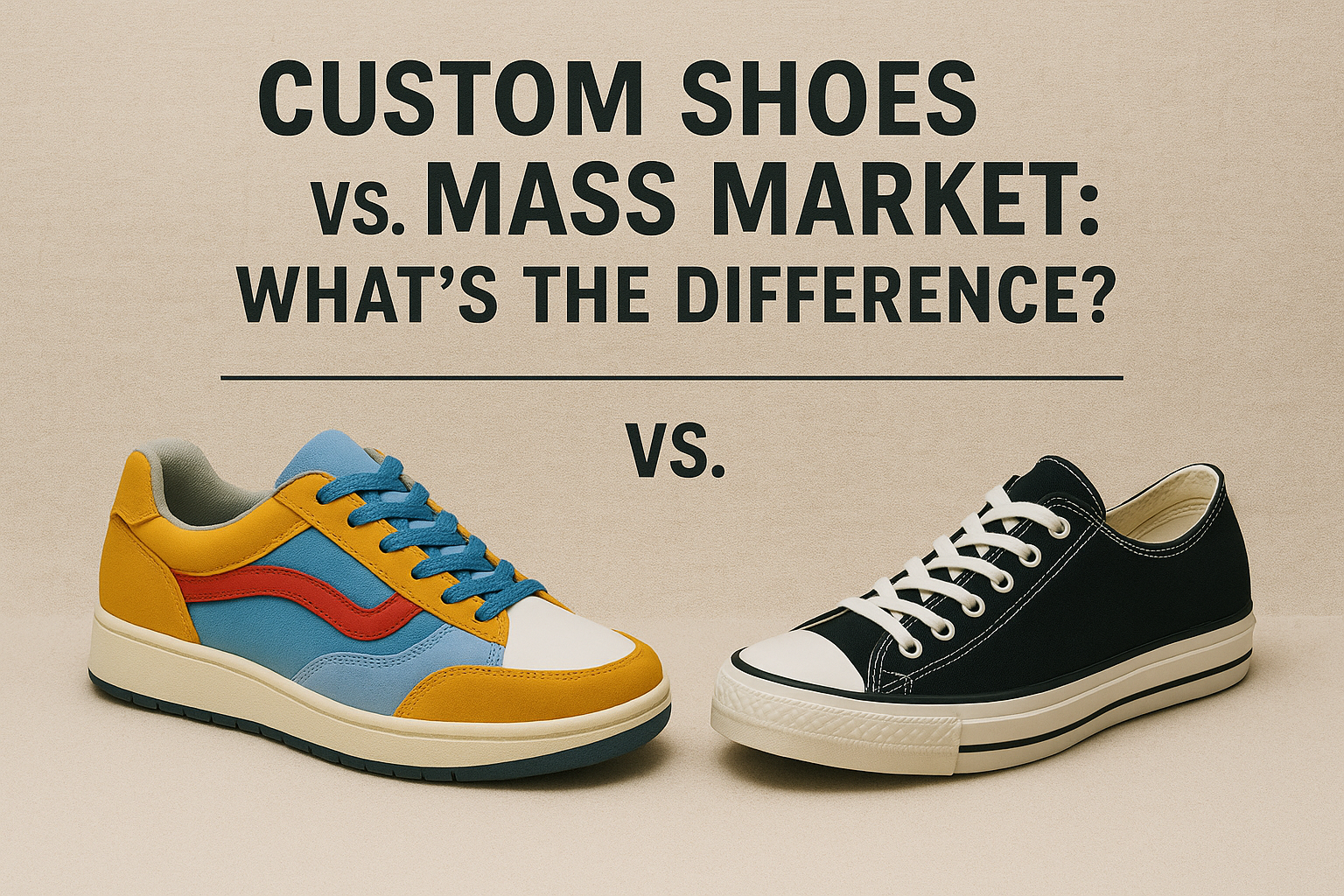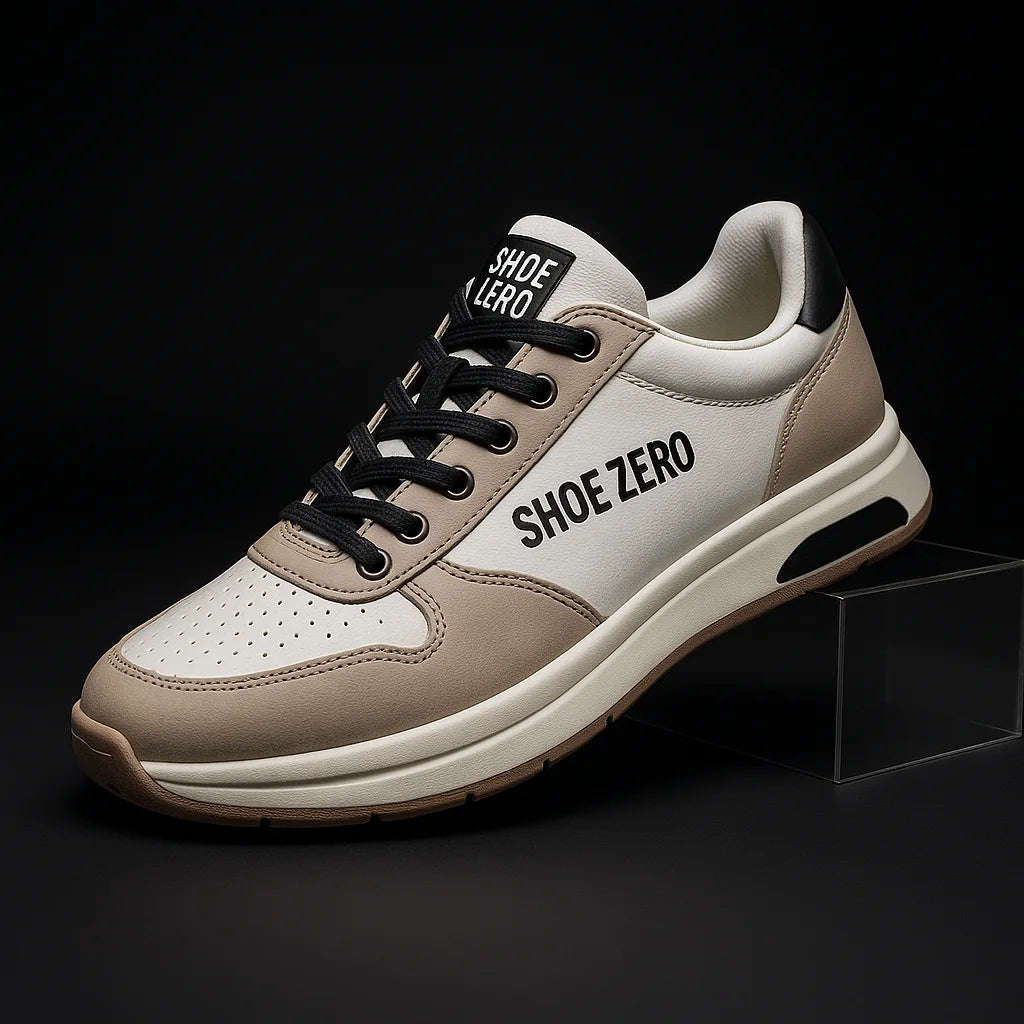Welcome to our shoe sizing guide, where we're dedicated to helping you find your perfect fit. We know that finding the right size can make all the difference when it comes to your comfort and overall health. That's why we've put together this comprehensive guide to help you measure your feet, choose the right size, and maintain the shape of your shoes over time.
Whether you're experiencing foot pain, trying to avoid injuries, or just looking to upgrade your shoe collection, our guide has got you covered. We'll walk you through the importance of finding the right shoe size and highlight some of the common mistakes people make when sizing their shoes. We'll also provide tips on how to choose the right width for your feet and how to find the perfect fit for different shoe styles, from boots to sandals to athletic shoes.
No matter what your shoe size or style preference, our shoe sizing guide is here to help you find your ideal fit. So, let's get started!
Why Finding the Right Shoe Size Matters
Wearing shoes that fit properly is essential for overall foot health and comfort. Poorly fitting shoes can lead to a host of foot problems, including blisters, corns, calluses, and even structural issues like bunions.
But the benefits of finding the right shoe size go beyond just avoiding foot pain and discomfort. Properly sized shoes can also improve your posture and reduce your risk of injury.
When you wear shoes that are too small, your toes may become cramped and crowded, leading to a range of foot problems. This can also contribute to an unstable gait, as your feet are not able to make full contact with the ground.
Conversely, when you wear shoes that are too large, your feet are more likely to slide around inside the shoes, which can cause blisters and other issues.
Overall, taking the time to find the perfect shoe size is well worth the effort, as it can help you avoid foot problems and enjoy greater comfort and stability on your feet.
How to Measure Your Feet
Measuring your feet correctly is crucial to finding the perfect shoe size. Here are some easy steps to follow:
- Get the right tools: To measure your feet, you'll need a foot ruler or a Brannock device. These can be purchased online or at a shoe store.
- Measure at the right time: Ideally, measure your feet at the end of the day when they are at their largest due to swelling from daily activities.
- Wear the right clothing: When measuring your feet, wear the socks or stockings that you typically wear with your shoes.
- Measure each foot: Your two feet may differ in size, so measure each foot separately to ensure a proper fit.
- Find your length: Place your foot on a flat surface and use the ruler or Brannock device to measure the distance from the heel to the longest toe. Record this length.
- Find your width: Use the ruler or Brannock device to measure the width of the ball of your foot, which is the widest part. Record this width.
Once you have your measurements, use a shoe size chart to find your perfect fit based on your measurements and the brand you are purchasing.
Understanding Shoe Sizes
Shoe sizes can vary depending on the region and sizing system used, so it's important to understand how different sizes compare. Here's a breakdown of the most common sizing systems:
| Sizing System | Equivalent Sizes |
|---|---|
| US | Women's: 5-12, Men's: 6-16 |
| UK | Women's: 2-9, Men's: 6-14 |
| European | Women's: 35-43, Men's: 39-50 |
It's important to note that some shoe brands may use their own sizing system, so always check the brand's size chart for the best fit.
Tips for Finding the Perfect Fit
When it comes to finding the perfect shoe size, there are a few things you should keep in mind to ensure maximum comfort and support. Here are some tips to help you find the perfect fit:
- Try on shoes at the end of the day: Feet tend to swell throughout the day, so it's best to try on shoes later in the day when your feet are at their largest.
- Wear the socks you plan to wear with the shoes: This will give you a more realistic idea of how the shoes will fit with the thickness of your socks.
- Walk around in the shoes: Don't just stand still in the shoes, take a few steps and see how they feel. Make sure there is enough room for your toes to move around comfortably and that the shoes feel snug but not too tight.
Remember, it's important to choose shoes that fit properly to prevent foot pain and injuries, as well as promote better posture and overall health.
Adjusting the Fit
If you find that your shoes aren't fitting quite right, there are a few things you can do to adjust the fit:
- Add inserts: Inserts can help fill any extra space in the shoe and provide additional support and cushioning.
- Use heel grips: Heel grips can help keep your heels from slipping out of the shoe and provide a better fit.
- Take the shoes to a cobbler: A cobbler can adjust the fit of your shoes by stretching or narrowing them as needed.
By following these tips and adjusting the fit of your shoes when necessary, you can ensure maximum comfort and support for your feet.
Common Shoe Sizing Mistakes to Avoid
Getting the right shoe size is crucial for comfort and overall foot health. Unfortunately, many people make common sizing mistakes that can result in discomfort, pain, and even injury.
Buying Shoes in the Morning
Did you know that your feet can swell throughout the day? That's why it's recommended to go shoe shopping in the afternoon or later. Buying shoes when your feet are at their largest will ensure a proper fit that remains comfortable throughout the day.
Assuming All Brands Fit the Same
Don't assume that the same size in one brand will fit the same in another brand. Different brands and even different shoe styles within the same brand can have different sizing. Always try on shoes before purchasing, and don't be afraid to try different sizes or styles.
Ignoring Widths
Shoe width is just as important as length when it comes to a proper fit. If your shoes are too narrow, they can cause pain and even lead to conditions such as bunions. Conversely, shoes that are too wide can cause your feet to slide around inside, leading to blisters and other issues. Always have your feet measured for width and choose shoes that fit properly in both length and width.
Not Considering the Purpose of the Shoes
The type of shoes you're buying should also be taken into consideration when it comes to finding the right fit. Athletic shoes are designed to fit differently than dress shoes, so make sure to choose the right size and style for the occasion.
Assuming Your Feet Haven't Changed
Just like the rest of your body, your feet can change over time. It's not uncommon for people to assume that their shoe size hasn't changed since high school, but this may not be the case. Weight gain, pregnancy, and even aging can all impact your feet, so it's important to have them measured regularly.
By avoiding these common shoe sizing mistakes, you can ensure a comfortable fit that supports your overall foot health.
Shoe Styles and Their Sizing
When it comes to sizing shoes, not all styles are created equal. Different types of shoes have different fit requirements, so it's important to know what to look for when trying on different styles.
For example, boots tend to have a more narrow fit than athletic shoes. Sandals, on the other hand, tend to have a looser fit, with more room in the toe area.
When trying on shoes, pay attention to how they feel and how they fit. Don't be afraid to try on multiple sizes and styles to find the perfect fit.
| Shoe Style | Sizing Differences |
|---|---|
| Athletic Shoes | Tend to have a wider fit to allow for movement and breathability. |
| Boots | Often have a more narrow fit for support and stability. |
| Sandals | Often have a looser fit, with more room in the toe area. |
| Heels | May require a half size larger as the foot slides forward, leading to more space needed in the toe box. |
Keep in mind that some shoes may require a specific type of sock or stocking for proper fit, so it's always a good idea to bring the footwear you plan on wearing with you when trying on shoes.
The Importance of Trying on Shoes
While it may be tempting to order shoes online and skip the in-store try-on, this can lead to ill-fitting shoes and discomfort down the road.
It’s crucial to try on shoes, walk around in them, and test them out to ensure they fit correctly.
By understanding the differences in sizing between shoe styles, you can ensure a comfortable fit that is perfect for you.
Shoe Widths
When it comes to finding the perfect pair of shoes, size isn't the only factor to consider. The width of your foot is just as important. Wearing shoes that are too narrow or too wide can cause discomfort and even lead to foot problems over time.
Most shoe brands offer a range of width options, including narrow, standard, and wide. It's essential to choose the right width for your foot to ensure optimal comfort and support.
Measuring your foot width is easy using a simple tool called a Brannock device. This device measures both your foot length and width, ensuring a perfect fit every time.
| Shoe Width | Measurement (inches) |
|---|---|
| Narrow (AA) | Less than 3.4" |
| Standard (B) | Between 3.4" and 4" |
| Wide (D) | Between 4" and 4.6" |
| Extra Wide (EE) | More than 4.6" |
If you have wide feet, you may want to consider purchasing shoes labeled as "wide" or opting for a half size larger than your usual size. Conversely, those with narrow feet may want to choose shoes labeled as "narrow" or opt for a size smaller than their usual size.
Common Concerns About Shoe Widths
-
What do I do if my shoe is too wide?
If your shoe is too wide, try adding insoles or heel pads to fill the space. Alternatively, you can try wearing thicker socks to take up some of the space. -
What if my shoe is too narrow?
If your shoe is too narrow, it may be difficult to stretch it out. Instead, consider purchasing shoes in a wider size or opting for a different brand that offers a wider variety of widths. -
Do all shoe brands offer multiple width options?
No, not all shoe brands offer multiple width options. It's important to research brands before purchasing to ensure they offer a width that will fit your foot comfortably.
Sizing for Children's Shoes
Sizing children's shoes can be especially challenging as their feet are constantly growing and changing. It is important to regularly measure their feet to ensure a comfortable fit.
Here are some tips on how to choose the right size for your child's growing feet:
- Use a foot ruler or Brannock device to measure your child's foot length and width.
- Measure their feet at the end of the day, as their feet tend to swell throughout the day.
- Leave some extra space in the shoe to accommodate growth - about a half-inch of room in the toe area is ideal.
- Look for shoes with good arch and ankle support to promote healthy foot development.
It is also important to keep in mind that children's shoe sizes can vary between brands. Always check the size chart for the specific brand and style you are purchasing.
As children grow, their shoe size can change quickly. It is recommended to check their shoe size every 2-3 months to ensure proper fit and support.
Shoe Size Maintenance
Once you have found the perfect pair of shoes, it's important to keep them in good condition to ensure they maintain their fit. Here are some tips on how to maintain your shoe size:
1. Store your shoes properly
Always store your shoes in a cool, dry place away from direct sunlight. Avoid storing them in moist areas, as this can cause them to warp or lose their shape.
2. Clean your shoes regularly
Regular cleaning can help prevent dirt and grime from building up on your shoes, which can stretch the material and affect the fit. Use a soft-bristled brush and a gentle cleaner to remove any dirt or stains.
3. Invest in shoe trees
Shoe trees are wooden or plastic inserts that are designed to help maintain the shape of your shoes. Insert them into your shoes when you're not wearing them to help them retain their shape.
4. Stretch your shoes if needed
If your shoes start to feel tight or uncomfortable, you may need to stretch them for a better fit. You can try using a stretching spray, or take them to a professional shoe repair shop to have them stretched.
5. Replace worn-out shoes
As much as we love our favorite pair of shoes, they will eventually wear out and lose their shape. To maintain your shoe size and ensure optimal comfort and support, it's important to replace your shoes when they start to show signs of wear and tear.
__________________________________________________
Key Takeaways
Finding the right shoe size is crucial for overall foot health, comfort, and stability. Poorly fitting shoes can lead to blisters, pain, and even long-term injuries. To ensure a perfect fit, always measure your feet correctly, consider both length and width, and test shoes before making a decision. Pay attention to differences in sizing between shoe styles, and regularly measure children’s feet as they grow to prevent discomfort.
At Shoe Zero, we make sizing easy by letting you design and wear footwear that truly matches your style and comfort. Explore our custom shoes and find the perfect fit across every style, from performance-ready custom basketball shoes to everyday custom low tops and custom high tops. For something bold, check out our custom boots or laid-back custom sandals. We also offer custom kids shoes designed with growing feet in mind, along with a wide range of custom merch to complete your look.
The right shoe size ensures comfort and support—pair that with Shoe Zero’s customization options, and you’ll enjoy footwear that fits perfectly and looks exactly how you want.
FAQs (Frequently Asked Questions)
1. How often should I measure my feet?
It's a good idea to measure your feet at least once a year, or anytime you notice changes in your foot size or shape. Factors such as weight gain/loss, pregnancy, and aging can all affect your foot size.
2. What if my feet are different sizes?
It's actually quite common for one foot to be slightly larger than the other. In this case, it's best to choose shoes that fit the larger foot and make adjustments as needed for the smaller foot (such as adding an insole or heel grip).
3. How do I know if my shoes are too small or too big?
If your shoes are too small, you may experience discomfort, blisters, or pinched toes. If they're too big, your foot may slide around inside the shoe, leading to rubbing and blisters. It's important to choose shoes that fit snugly but comfortably.
4. Can shoes be stretched if they're too small?
Yes, shoes can often be stretched to accommodate a slightly snug fit. However, this depends on the material of the shoe and how much stretching is required. It's best to have a professional shoe repair shop handle this task to avoid damaging the shoe.
5. What if I'm in between sizes?
If you're in between sizes, it's usually best to go up to the next half size. This will give your foot a little extra room without being too loose. You can also try adding an insole for a more customized fit.


